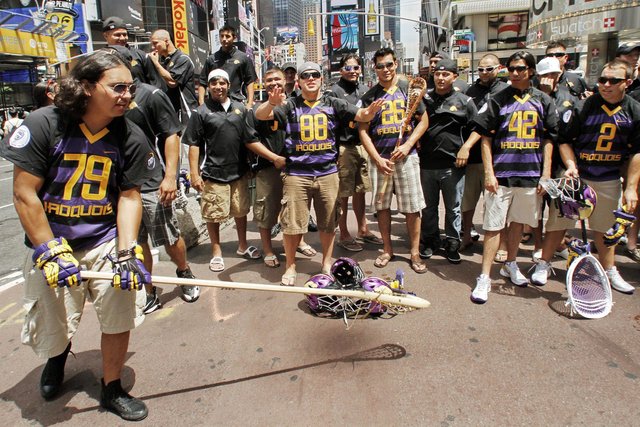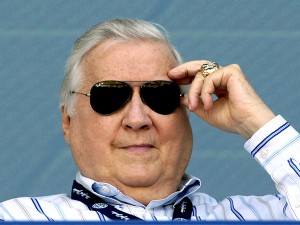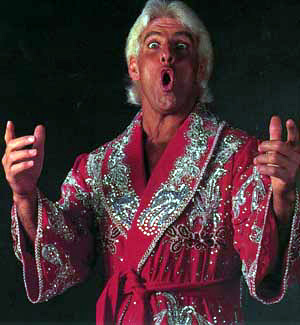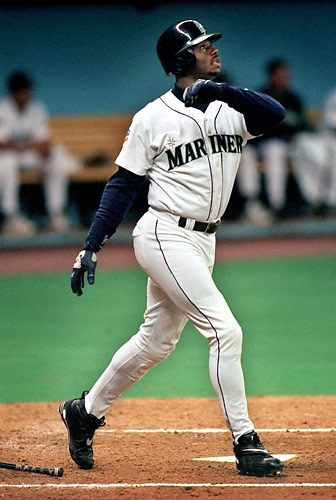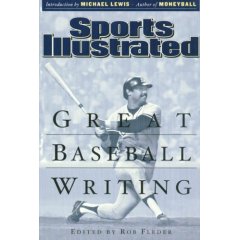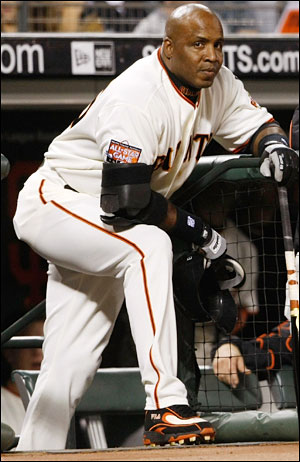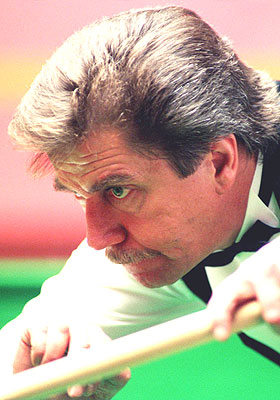Book Review: the Imperfectionists by Tom Rachman
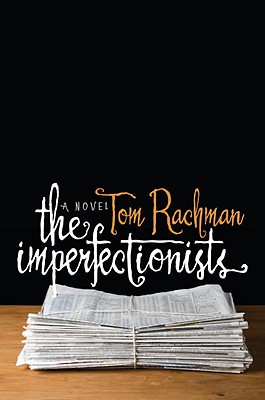 As much as I love reading, it’s rare that a book leaves me breathless. Tom Rachman’s the Imperfectionists does just that, over and over again.
As much as I love reading, it’s rare that a book leaves me breathless. Tom Rachman’s the Imperfectionists does just that, over and over again.
Rachman is a London-born journalist who has worked all over the world and he chose a familiar subject for his debut novel – the newsroom of an English-language paper in Rome.
Each chapter revolves around a different staff member or reader, with many of their stories intersecting and building on previous episodes. At every interval there is a short story about the history of the paper, colouring in some of the background of the main storyline.
It’s a masterful plot structure, deftly done, especially for a first-time novelist. The way the disparate characters and storylines intertwine and relate shows how skilled Rachman is as a storyteller.
The book had been recommended to me by my fiancé, who knew it’s tales of deadline drama in a newsroom would appeal to me, and she was spot on. Although Rachman never stoops as low as cliché or caricature, many of the characters rang true.
All of the characters are sketched out with a deft touch rarely seen in even the best authors, let alone by a first-timer. Rachman’s cast are remarkably realistic and likeable, creating sympathy for the characters and disappointment when things inevitably turn sour for the protagonists.
That’s really my one complaint about the Imperfectionists – it’s unrelentingly depressing. No good deed goes unpunished in Rachman’s world. Characters are craven and selfish. Infidelity is common with everyone ending up alone. Even success comes at a great cost in this world.
Half-way through I was dying for at least one good thing to happen to a character. Some sort of ray of hope, one chance at redemption. Anything! I was desperate for a lifeline, but it never came.
No, Rachman never gives up on his dark outlook, with the final chapter being one of the most heartbreaking.
Despite that, the Imperfectionists is an excellent read that will impress you with its complex structure. Although I was introduced to it because of my occupation as a journalist, I think this book would appeal to anyone. Definitely worth checking out.
A low day in lacrosse history
As of this morning the Iroquois Nationals lacrosse team continues to be banned from entering the United Kingdom and therefore will likely be unable to participate in the 2010 World Lacrosse Championships in Manchester this week.
At issue is the Iroquois’ use of their Haudenosaunee passports, documents that for 33 years have been accepted by Canada, the United States, the United Kingdom and other countries.
Unfortunately, as all the citizens of Fortress North America know, in the wake of 9/11 stricter travel regulations have been put in place and the British now refuse to accept the low-tech passports that do not have any bar codes or electronic chips.
The Iroquois Nationals were scheduled to play England in the tournament’s first match later today, but instead the host nation is going to scrimmage with Germany.
The Iroquois are still hoping to make it to the tournament, but right now their participation is highly doubtful and they will be hard pressed to win the championship, having defaulted a game.
They’ll have a lot of hoops to jump through before they can play – although the American government has given them a one-time waiver at the behest of Secretary of State Hilary Clinton, they still need approval from the Canadian and British governments.
As I said on Monday, it’s a ridiculous situation. Ultimately, we’re talking about a group of people being barred from playing a sport they invented, because no one is sure they’ll return to a continent they’re indigenous to.
It’s madness.
One of the most disappointing parts of this story is that its roots lie in the best of intentions. The Iroquois have a national team as a nod to the native roots of lacrosse and the Haudenosaunee passports have been available to the Iroquois people for decades because their traditional lands straddle the Canadian-American border.
Although it’s obvious that the Haudenosaunee passports could use an upgrade, it’s apparent that the Canadian and American governments were negligent in excluding the Iroquois and other native peoples from their new security strategy.
Why did no one foresee a day when an Iroquois passport holder would want to travel outside of the United States and Canada? Couldn’t this have been avoided?
This tournament has been scheduled for four years, so it’s shocking that the three state departments involved could find a way to accommodate the Iroquois.
It’s my sincere hope that if the Nationals are unable to participate in the tournament, the 29 teams from other countries find a way to show their support for their Iroquois friends. One option would be for the other lacrosse teams, particularly the American and Canadian teams, to wear purple armbands as a show of solidarity.
Of course, the ideal solution would be for the British government to smarten up and agree to allow the 47 members of the team into the United Kingdom. Unfortunately, any chance to avoid one of the most disappointing episodes in lacrosse history has almost passed.
Book Review: Bullpen Gospels by Dirk Hayhurst
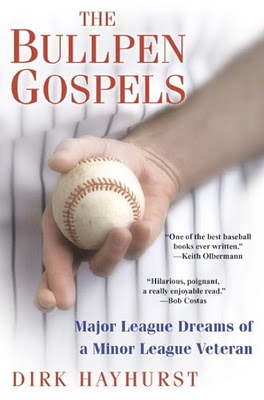 Halfway through Dirk Hayhurst’s Bullpen Gospels it occurred to me that I was reading one of the best books on baseball, ever.
Halfway through Dirk Hayhurst’s Bullpen Gospels it occurred to me that I was reading one of the best books on baseball, ever.
That’s some strong talk, particularly for someone who hasn’t read the entire baseball canon. But I’m getting there - just about every other book I read is about baseball.
I’ve devoured Jim Bouton’s Ball Four more than five times, I loved John Feinstein’s Living on the Black and Michael Lewis’ Moneyball. Also, as fans of this blog know, I’ve reviewed the graphic novel Satchel Paige:Striking Out Jim Crow as well as Sports Illustrated’s Great Baseball Writing.
The Bullpen Gospels slot in right above all of those, including Ball Four, my previous titleholder.
They’re comparable books too. Both are written by professional baseball players who find themselves pitching long relief in a bullpen full of odd characters. Yes, Bouton was an established major leaguer trying to master the knuckleball while Hayhurst, at that point, was a career minor leaguer in the San Diego Padres organization, but they’re still pretty similar books.
Bouton’s book is infamous for exposing the real lives of baseball heroes like Carl Yastrzemski and Mickey Mantle at a time when they were idolized by most fans. The aging Seattle Pilots reliever took a lot of heat for the book, with many people saying Bouton was a gloryhound. I don’t agree with that sentiment, but it certainly reads like an expose.
Love it or hate it, Ball Four is a hilarious and insightful read. But, by contrast, the Bullpen Gospels is a much more genuine and sensitive story.
Starting with Hayhurst’s truly dire home life with an unbalanced grandmother and a fractured family crippled not by one, but two, alcoholics you immediately feel for the young reliever. When he moves on to spring training and the minor leagues you can’t help but appreciate his sense of humour.
Perhaps the most noticeable difference between Hayhurst and Bouton is that the former rarely criticizes his teammates or the Padres’ executives. On the few occasions when he does speak poorly of someone, it is a reasonable and measured critique, and he shies away from dropping big names for the sake of glamour.
The only person Hayhurst is really hard on is himself.
Gospels is a quick read that makes its way through an entire baseball season, with a truly joyous ending. It also imparts a better understanding of what life in the minors is like for aspiring ballplayers. Hayhurst is an effortless and charming writer. He’s likeable and always sincere in his beliefs.
I’d recommend this book to anyone, particularly as a companion to Jim Bouton’s Ball Four.
George Steinbrenner will be missed
Earlier today the Associated Press reported that George Steinbrenner, the long-time owner of the New York Yankees, died at the age of 80 after suffering a massive heart attack.
Steinbrenner’s passing was confirmed by the Yankees organization, as well as his family who issued a statement.
“He was an incredible and charitable man,” the Steinbrenners said in their release. “He was a visionary and a giant in the world of sports. He took a great but struggling franchise and turned it into a champion again.”
I wholeheartedly agree with those sentiments. George Steinbrenner was the best owner in baseball, and arguably, in all of professional sports.
Consider the Yankees without the seven World Series championships (2009, 2000, 1999, 1998, 1996, 1978, 1977) they won under his direction. It’s hard to do.
That means no Mr. October, Reggie Jackson.
Derek Jeter, Mariano Rivera, Andy Pettite and Jorge Posada wouldn’t have been the Core Four of the dynasty of the late 1990s and early 2000s.
The New York Yankees, the Evil Empire as we know it, would not have existed without the leadership of the Boss.
Now some may argue that Steinbrenner’s influence damaged the game. As a season ticket holder of the Toronto Blue Jays, I can sympathize. The war of attrition with the Boston Red Sox in the American League East with both teams stockpiling arms like Cold War superpowers has basically ruined any chance of my hometown team winning a pennant.
But that’s a situation that can’t be entirely blamed on Steinbrenner. Major League Baseball made the luxury tax rules, he merely played within their bounds. I can’t say that I blame him. Any owner – any person, for that matter – should pursue success to the fullest extent of their resources.
There’s no point in hating Steinbrenner simply because he had more resources than everyone else.
I’m sure that one of my colleagues in the media is going to write a similar eulogy about how Steinbrenner is the last of a dying breed. How we’ll never see another person make such an impact as the owner of a professional sports team.
Although George Steinbrenner was a unique character, there will be more owners like him. Already in the National Basketball Association we have Mark Cuban and Mikhail Prokhorov, the owners of the Dallas Mavericks and New Jersey Nets respectively, both cast very much in the Steinbrenner mould.
No, I think that Steinbrenner serves as the prototype of what the owner of a professional sports team can be. An ideal example that other owners should model themselves after. He was one of the greats, and although his New York Yankees are often hated, his is a legacy that should be admired.
Back to the blogging!
 It’s been weeks since I last posted on ye olde blogge, thanks largely to my ongoing involvement with the development of new content for Canada’s Sports Hall of Fame.
It’s been weeks since I last posted on ye olde blogge, thanks largely to my ongoing involvement with the development of new content for Canada’s Sports Hall of Fame.
But since I was waiting on some editorial turnaround, I decided to go on a baseball pilgrimage of the northeastern United States, touring the baseball Hall of Fame in Cooperstown, N.Y., the new Yankee Stadium and Citifield in New York City and then on to the oldest stadium in the majors, Boston’s Fenway Park.
It was at the home of the Red Sox that I proposed to my fiancé Katy, capping off an amazing vacation.
But I owe you, my readers, an apology. I was so busy planning my trip and proposal that I didn’t do my due diligence and post links to my most recent writing before leaving for the U.S. I’m sorry because I like to keep you all updated on my various projects.
Recently, I’ve been doing some pretty exciting work for HockeyPrimeTime.com, including a draft preview, a free agent preview and a notebook, all on the National Hockey League’s Northeast division.
Even worse, my holiday matched up with one of the craziest fortnights in sports history. Let’s recap with a few quick hits.
Only Japanese officials from now on – Yes, early favourite Spain did win the World Cup on Sunday. But their victory, along with the results of many other games, was tainted by terrible officiating.
What was particularly galling in the championship game was that Spanish forward Andrés Iniesta’s winning goal was made possible by an undeserved goal kick - the ball had clearly been deflected out of bounds by a Spanish defender.
By my eyes, the only consistently strong officials hailed from Japan, odd for a nation that has only recently taken to soccer. The 2010 was a huge opportunity for FIFA to expand its brand to North America, a chance that was blown by the officials.
Iroquois Nationals might not make FIL World Championship – In a completely bizarre situation, the Iroquois Nationals team is currently unable to attend the lacrosse world championship in Manchester, England later this week.
Inside Lacrosse editor-in-chief John Jiloty explains:
“The issue centers around the Nationals (a group of 42, all members of the Six Nations of the Iroquois Confederacy) traveling on their Haudenosaunee passports. For more than 20 years, they’ve traveled on these passports with no problem. But the United Kingdom will only allow them into their country if the United States will let them back in. And as of Friday, the Iroquois did not have that assurance from the U.S.”
This is totally nuts. Yes, they’re travelling on a very specialized kind of passport, but the Iroquois are all Canadian and American citizens and upstanding ones at that.
The idea that they might miss out on playing a sport they invented because they can’t return to a continent that they’re indigenous to is pure lunacy.
The Decision LeBacle – I know, I know. Everyone and their aunt has already talked about LeBron James’ one-hour ESPN special where he callously announced his move to the Miami Heat. But how can I not talk about it? It will undoubtedly become one of the turning points of sport in the past 50 years, not just because that hour of television was a public relations disaster, but because it’s going to change the face of free agency in the National Basketball Association, and probably other major league sports as well.
I’ve got a lot more to say on all these topics, but I’ll leave you on that note. Blogging on weekdays has returned! Brap-brap.
Taking Care of Business
It has been three weeks to the day since I last posted on here, and for that, I am sorry.
It just couldn't be helped though - I’ve been very busy with my continuing work at Canada’s Sports Hall of Fame. The good news is that most of my work is now done, and the final stage should be completed in about mid-July.
My work hasn’t been limited to freelancing for the Hall of Fame though. I’ve been spending the summer doing pagination for the Canadian Press, as well as a few side projects.
The first of these projects was for my friend Victor Bachmann, a professional mixed martial artist based in Edmonton. I had interviewed him years ago for a Canadian fighting magazine. Unfortunately, they never had the space for the article and its references quickly became dated.
In addition to his prizefights, Victor is a teacher at the Hayabusa Fighting Training Centre, and he needed a profile for the gym’s website. Remembering the story I’d written about him, Victor asked me to re-write it for him.
I’ve never had to re-write an article so dramatically before, but I think I really sharpened this piece up.
My other project was for HockeyPrimeTime.com, a website that covers the National Hockey League.
Their editor, J.P. Hoornstra, asked me to do a preview of the Northeast Division’s draft possibilities and I happily complied.
It was a lot of fun looking at the different needs and draft picks of the hockey teams I am most familiar with: the Boston Bruins, the Buffalo Sabres, the Montreal Canadiens, the Ottawa Senators and the Toronto Maple Leafs.
The next few weeks are all laid out for me - I’ll be doing a preview of the free agent prospects of the Northeast Division teams for HPT.com and completing my work with Canada’s Sports Hall of Fame. Fortunately, I’ll also have more time to do blog posts.
Professional Wrestling Makes Life Better
Obviously, I love sports. This website and my choice of career stand as a testament to this. I’m not very particular either. Baseball, hockey, basketball, football, soccer, lacrosse, the Olympics, it’s all good. Heck, even artistic cycling has made its way on to this blog.
But there’s an ugly stepchild in the sports family that I’ve also got some love for: sports entertainment, better known as professional wrestling.
Yes, it’s obviously fake. But so are most movies and television shows. Professional wrestling is also really corny and clichéd, but that doesn’t diminish the athleticism and skill of its performers.
In fact, there are at least three things about professional wrestling that anyone can appreciate.
You may not know who Ric Flair is, but I promise you that you’ve heard his trademark celebration. It’s a staple of every arena and stadium across North America.
For the uninitiated – Ric Flair has won the world heavyweight championship in various promotions 21 times and is a legend of the business. A lot of the standard ideas in wrestling stem from his career.
One of his signature moves is a knife-edged chop across his opponent’s chest, usually followed by him yelling “WOOO”. The crowd then responds with a chorus of “WOOOs”. It’s now to the point that when any pro wrestler chops someone the crowd will honour Flair with the call.
It’s seeped into popular culture as well. Whenever a goal is scored by the Carolina Hurricanes on home ice Ric Flair appears on the arena’s screens and implores the crowd to WOOO with him. I even saw chef Ted Reader give a Ric Flair Wooo when he broke the record for the world’s largest hamburger.
It’s everywhere and it’s all thanks to wrestling.
2) Entrance Music
I know, I know, athletes in many sports have entrance music. Boxers, mixed martial artists, even hitters coming to bat in baseball have their own entrance music. But it’s an innovation that started in professional wrestling with Gorgeous George, a born-promoter who both Muhammad Ali and James Brown credit as the inspiration for their over-the-top antics and showmanship.
Wrestling still has the most dramatic and often timely entrances, with music being used to cut off the promos of other promos. It’s a trick that never gets old.
There are few moments as exciting as hearing the opening chords of a song that you identify with a particular athlete. Try imagining Mariano Rivera without Metallica’s Enter Sandman or Trevor Hoffman strolling to the mound without the ominous bells at the start of AC/DC’s Hell’s Bells. You just can’t, because entrance music is awesome.
3) The Heel Turn
In wrestling jargon a face is a good guy, while a villain is called a heel. Of course, as sports entertainment is pretty much just a male soap opera, it stands to figure that heels and faces are forever changing sides and turning heroic or evil on a regular basis.
But when a heel turn is done right, like in the clip above, it’s exciting and always gets the crowd amped up. If this could be done in real life, it’d be the best thing ever.
There’s a sense of gut-wrenching heartbreak when the crowd realizes that their hero, the person they’ve been cheering for, is a fraud that has actually been nefariously plotting for their own ends. Melodramatic? Absolutely. But sometimes it really works.
It would be a really refreshing change of pace if the real-life heels that populate professional sports actually embraced their roles as the bad guys, instead of setting public relations flack to spin the story and make it seem like they're just misunderstood. It'd be nice to see someone embrace the fact that they're a jerk.
Consider a world where Alex Rodriguez would sport perma-stubble and rip up the signs of opposing fans. Imagine Chris Pronger cutting promos before games where he calls all the fans of the Edmonton Oilers pencil-necked geeks and then leaving the ice as bad heavy metal blared. Or what about Ron Artest threatening to climb into the stands and whoop anyone drinking a Coke? The possibilities are endless.
It would only make it all the sweeter when the likeable teams and athletes won out, and would undoubtedly draw more ratings.
A fond farewell to Ken Griffey Jr.
Last night was one of those perfect storms of sports news that happens every month or so.
Armando Galarraga’s perfect game was ruined on the 27th out by a controversial call by umpire Jim Joyce.
Game 3 of the Stanley Cup final went into overtime, with a goal being called back after the puck miraculously rolled across the crease. The no-goal was after National Hockey League Commissioner Gary Bettman got cantankerous with Ron MacLean during the second intermission of Hockey Night in Canada.
But what I’ll always remember about June 2nd 2010 is that Ken Griffey Jr. retired.
As I’ve written before, Griffey was my favourite baseball player growing up.
In his prime he was the best fielder and hitter in the game. In a time when professional athletes develop chips on their shoulders, become arrogant or act out, Griffey remained fun-loving and grounded.
His statistics speak for themselves. Griffey accumulated 630 home runs, the fifth-most in baseball history. He has 2781 hits, 1836 RBIs and a career batting average of .284. Hall of Fame numbers to be sure.
Griffey’s best season was undoubtedly 1997 when he won the American League MVP with the Seattle Mariners. That year he hit .304 while reaching career highs with 56 home runs and 147 RBIs.
As impressive as his numbers are, Griffey will always have the aura of unfulfilled potential. Not because he lacked effort, but because he never played in a World Series, even though his Seattle Mariners had a host of talent including Alex Rodriguez, Randy Johnson and Edgar Martinez.
Because he moved to the Cincinnati Reds, a team that has struggled throughout the 1990s and 2000s, he missed out on further playoff opportunities, including two more American League Championship appearances by Seattle in 2000 and 2001.
Nagging injuries forced Griffey to miss prime years of his career. Between 2002 and 2004 he hit a total 41 home runs while playing in only 206 games over those three seasons.
Although Griffey was great, arguably the best of an entire generation of ballplayers, it will always seem as though he might have had still had some untapped potential.
Despite those lost years, Griffey’s career represents an ideal trajectory that in a perfect world all athletes would follow.
Griffey was a genuinely good guy. Griffey knew he was going to be traded from Seattle in 2000, so he asked to be sent to his hometown Cincinnati Reds, the team his father played for in their Big Red Machine glory days. Given the opportunity to abandon the Reds in favour of a bigger salary with the New York Yankees, Griffey took a smaller contract to stay near his family.
He can also be judged for what he didn’t do. In an era where players like Mark McGwire are being held out of Baseball’s Hall of Fame for their connection to performance enhancing drugs, Griffey remains a first-ballot shoe-in because he’s never been connected to any kind of steroid use.
Although Griffey was a shadow of his former self in his final years with the Reds, Chicago White Sox and again with the Mariners, his legacy on and off the field is exemplary of what all baseball players could be – a role model off the field who actually produces incredible numbers.
Griffey will be missed as player, but he will always have a place in baseball.
Knowledge bomb – Canadian Sports History
As I mentioned two weeks ago, my I’ve been very busy doing some freelance work for Canada’s Sports Hall of Fame. The past two weeks have been spent researching and selecting the top two or three defining moments in the lives of 96 honoured members of the Hall.
Along the way I’ve learned a lot of quirky and interesting facts about some of Canada’s greatest athletes.
Snooker master Cliff Thorburn was the first person in world championship history to record a perfect break of 147.
For those of you who’ve never played snooker: a perfect score of 147 means that he sank every cherry ball on the table and was able to follow up with the black ball (the most valuable of the coloured balls) every time. Further, he did it without his opponent ever sinking a single ball. It’s an incredible feat of strategy, foresight and skill at any level, let alone in a world championship.
Unfortunately, Thorburn went on to lose the final match of the tournament to Steve Davis, but that doesn’t diminish his accomplishment in the first round against Terry Griffiths.
Famed strongman Louis Cyr’s records are hard to verify since few were recorded and most were hyped and exaggerated by promoters. However, he definitely set a record in 1895 by lifting 4,337 pounds on his back. As impressive as that is, the story that struck me was that at the age of 18 Cyr won a strongman competition in Boston by lifting a horse off the ground.
Don’t get me wrong, no horse weighs as much as 4,337 pounds, but they do, you know, move around and squirm. Particularly if they’re uncomfortable, like if someone was picking them up off the ground. Trying to lift something as heavy as a horse while it is moving is way more impressive than a dead lift, no matter the disparity in weight.
Finally, as many hockey fans know, Henri Richard holds the record for most Stanley Cup wins as a player. His 11 championship rings is a mark that may never be passed with the salary cap-era of the National Hockey League in full effect.
What most people don’t know is that at the time of Richard’s retirement he had won more Stanley Cups than he had had birthdays. Since he was born on February 29th, 1936 – a leap year – he had only celebrated his actual birthday nine times before his retirement during the 1974-75 season.
Anyway, thought I’d just drop some knowledge. I should have time to do some more posting as the week continues.
